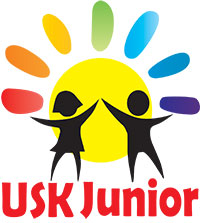 School Of Business
School Of BusinessUSK-JUNIOR School of business предлагает интеллектуальную революцию, интерактивную реформу сознания. Сегодня информационный, высокоскоростной поток лишает человека шанса на осознанный выбор, уничтожает личность. Убрав всю наносную шелуху с образовательных программ - интерактивов компании, мы оставили только то, что работает.
Обучение online с нашими интерактивами выведет Вас за грани стереотипов и ложных догм.
Мы предоставляем возможность открыть в себе новое масштабирование в знании, преодолеть Ваши внутренние предрассудки, страхи и преграды, чтобы Вы максимально реализовали свой внутренний потенциал. Правильная мотивация в сочетании с инновационными, групповыми, индивидуальными программами обучения USK Junior School of business обязательно дополнит Вас, сделав более результативным! Специалистами компании USK-Junior разработаны программы по обучению партнеров, включающие в себя: Interactive Genesis l-lV; Жизнь как творчество – «Lifeascreativity»; Школа тигра - «Tigerschool».
Программы постоянно усовершенствуются и дополнительно включают в себя предложения лидеров online образования мирового масштаба. Это программы национальных компаний США, Израиля, Европы, СНГ. (Coursera - проект массового образования online, основан профессорами Стэндфордского университета Эндрю Ином и Дафной Коллер). Обучение в AcademicEarth, Еdx. Международные бренд-тренеры дополнительно помогут Вам в формировании нового опыта это - JacobFedotov, BorisZhalilo программы МВА, BBA, MSc, ACM.

Проводит: вебинары, индивидуальные встречи, аудио курсы, e-mail/internet marketing Все что мы даем - это больше чем Вы пожелаете. Тренеры международного класса. В конце обучения выдается сертификат. Примите решение! Дорога в тысячу метров начинается с первого шага. Дисциплина. Воля. Инвестиции в себя - вот слагаемые сильной личности.
Менеджмент-консультант, систематизация маркетинга и продаж; внедрение изменений для роста бизнеса по показателям прибыли и продаж; систематизация роста; управление продажами и маркетингом; конкурентоспособность.
Самый титулованный бизнес-тренер России в сфере продаж, тренер-бренд, тренер-консультант международного уровня с опытом успешной работы в 14 странах. Выступает в качестве спикера на конференциях и бизнес-форумах, на сегодняшний день в 18 городах, 5 странах, с количеством участников до 1000 чел.

- "Каждый человек приходит в этот мир с уникальным творческим потенциалом. Раскрытие и реализация этого потенциала самая интересная и увлекательна работа в мире, которая даст человеку главное - смысл. Здоровье, деньги, уважение окружающих приходят сами.. как обязательные бонусы обретения смысла.
Так как, каждый человек уникален, так уникальны его смысл, миссия, цели и пути к себе (осознание себя в этом мире). Чужие пути ведут к чужим целям. Деньги, здоровье, социальный статус превращаются из знаков на пути в самоцель, но достижение ложных целей не приносит радости творчества. Путишествие по чужим дорогам - процесс скучный, тягосный, но привычный и проверенный другими.
Поиск своего пути к своей цели требует от человекапредельной внутренней честности. Начать диалог с собой всегда страшно, но наши страхи рассеиваются, когда мы делаем первый шаг к себе".
21 сентября 2017
Маркетинг, направленный на рост продаж и прибыли
22 сентября 2017
Доверие клиента: как сформировать, развивать и не терять
23 сентября 2017
Скрипты Эффективного Руководотеля
15 августа 2015
Консалтинг и аудит
18 сентября 2015
ВШУБ - Высшая школа управления бизнесом - базовая
10 октября 2015
Управляемые продажи
23 июля 2013
Мастер ДА
22 июня 2013
Мотивация без бюджета
5 июля 2013
Камасутра сервиса. Как влюбить клиента
1 декабря 2011
Дефференцированный перфоменс менеджмент
6 декабря 2011
Ключ к каждому клиенту
16 декабря 2011
Маркетинг, направленный на рост проДАж и прибыли

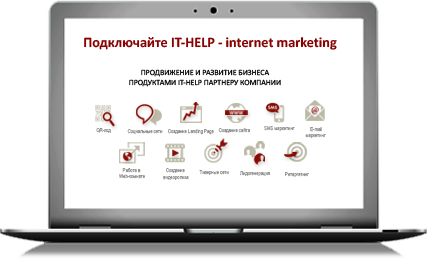
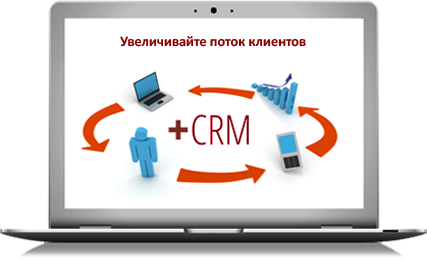
Выбрали готовый дизайн Landing Page Pro 7 для своего бизнеса.
Приобрели готовый дизайн Landing Page Pro 7 - получили свой Busines Pack
Базовая цена Busines Pack - 200$
Выбрали уникальный дизайн Landing Page Pro 7/9 разработаный под вас
Выбрали уникальный Landing Page как и 246800 владельцев бизнеса
200$ + за то что есть только у вас - согласно брифа настройки
USKpad
IOS/Android
Chatbot
помощник
VoIP
телефония
Консалтинг
и аудит
Web
оплата
Web
покупки
Доставка
товара
QR-код
доступ
Социальные
группы
Создание
Landing Page
Создание
сайта
SMS - E-mail
маркетинг
CRM
система
Работа
в Web-комнате
Создание
видеоролика
Тизерные
сети
Создание
лидогенерации
Ретаргетинг
цели




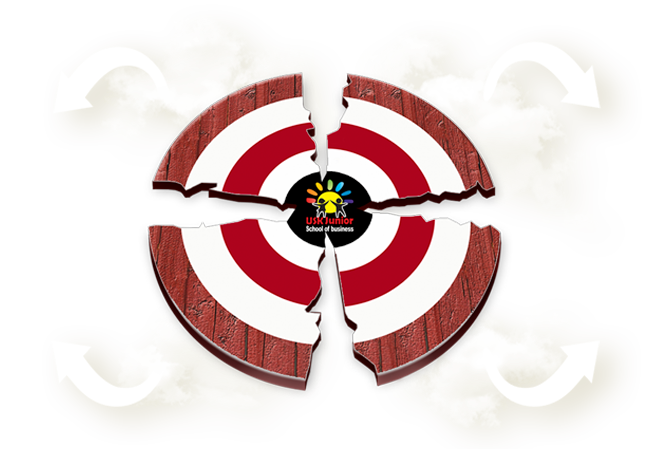
Основа счастья человека — это его осознанный выбор его самоидентификация. А знание — это возможность сделать этот выбор реализовав себя максимально.
Все люди должны обладать знаниями, и мы гарантируем эти знания Вам дать. Не зависимо от Вашего социального статуса и дохода.
ЦельМы убрали всю шелуху с наших программ. В наших курсах есть только то что работает сегодня. У нас самая минимальная стоимость обучения. И мы всегда даем больше чем вы оплатите.
Мы против невежества и безграмотности. Мы против коучей и тренеров "за дорого". Мы за приобретение знаний и за осознанный выбор.
Миссия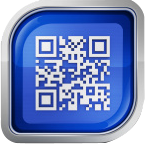










Только 777 партнеров бизнес-школы получат интерактивы, IT-help по цене в 10 раз меньше
человека уже
приобрели
наш продукт



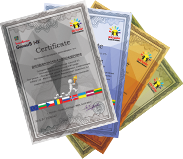


















Настоящим я выражаю свое согласие и разрешаю осуществлять обработку своих персональных данных, включая сбор, систематизацию, накопление, хранение, уточнение, использование, уничтожение, в целях связанных с возможностью предоставления информации о товарах и услугах, которые потенциально могут представлять интерес, а также в целях сбора и обработки статистической информации и проведения маркетинговых исследований. Я подтверждаю, что мне известна цель использования моих персональных данных и настоящим выражаю свое согласие на использование.
Я принимаю лицензионное соглашениеМгновенный доступ на ваш ресурс!

QR – код (quick response) – интуитивный, быстрый отклик в виде штрих-кода. Голограмма, картинка, изображение содержащее информацию, на которую легко откликнуться при наведении специального сканера. Достоинство QR-кода — мгновенный доступ на ваш web-ресурс. Размещение на визитке, иной полиграфической продукции, любые POS-материалы. Прекрасная возможность использования QR – кода для дополнительного налаживания отношений в построении бизнес партнёрстве.
Мы предоставляем возможность пройти обучение по данным программам для продвижения Вашего бизнеса. Дополнительно включаем курс анализа веб-ресурса, в результате которого он станет значительно эффективней для поисковых систем. Проводим интеграцию Вашей интернет-страницы под социальные/торговые площадки и другие модули, расширяющие Ваш бизнес.


SMM (Social Media Marketing) – социальный медиа маркетинг. Способ
конекта и привлечения пользователя через социальные площадки: социальные
сети, блоги, форумы, сообщества и иные веб-ресурсы. На сегодняшний день
рассказать о себе и компании таким образом высокоэффективно.
Этим мы добиваемся:
Главная цель Группы - это привлечь для Вас прямых клиентов, необходимых Вам заказчиков, нужную аудиторию, либо перенаправлять покупателей на Ваши сайты, интернет-магазины, другие сообщества.
Мы предлагаем Вам создание Вашей группы в социальных сетях, для развития, продвижения Ваших коммерческих бизнес интересов.
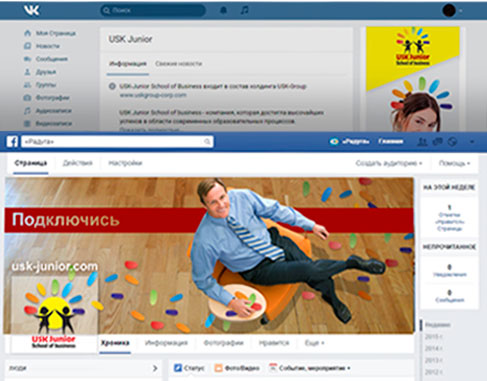
Краткая именная страница,
только Вы и Ваш бизнес!

Именно данный информационный ресурс является уникальным идентификатором личности
себя как партнера и своего запуска бизнеса в сегодняшнем IT-мире. Обладает важной
для вас функцией сбора, формирования и привлечения будущего партнера – той
контактной информации, которая нужна для работы (e-mail, номер телефона,
Messenger Viber, Whats App, социальные сети, иные возможности в расширении
вашего бизнеса). Landing page Pro-9 – это ресурс, веб-страница без
дополнительных многостраничных компонентов, одним из её свойств является
проинформировать нового клиента о вашем продукте.
Цель такого ресурса – это побудить к целевому действию: оставить заявку, лид,
совершить покупку, осуществить консультацию… Использование лэндинга значительно
повышает эффективность вашего бизнеса и количества заинтересованных партнёров.
Главной задачей этих ресурсов является превратить обычного посетителя в целевого
клиента компании, «подогреть готовность» к покупке. Создав свою страницу, Вы
значительно сэкономите бизнес-время.
Мы предлагаем Вам инструмент IT-help создания Лэндинг страницы, которая повысит эффективность Вашей аудитории, повысит конвертацию посетителя в покупателя или клиента Вашей компании, побудит к целевому действию, а так же даст возможность пройти обучение по расширению возможностей партнёра.


Вы партнер и спонсор.
Вы современны и перспективны

Самое важное в продвижении собственного бизнеса – создание веб-ресурса и своего идентификационного портфолио. На данный момент, веб-страница лучший маркетинговый концепт в продвижении себя и своего продукта. Эффективно сделанный брендинг, его уникальность, с визуальным оформлением подходящим под контекст, порой не менее важен, чем наличие офиса. Сегодня современный человек, сначала найдёт информацию про вас и компанию в интернете. Насколько понятно вы расскажите о себе, такое и сложится мнение у партнёров.
Мы предлагаем Вам создание ресурса с личным портфолио, где Вы можете указать динамику своего роста, свой успех, свои достижения. Мотивировать партнёрскую группу на совместную работу.
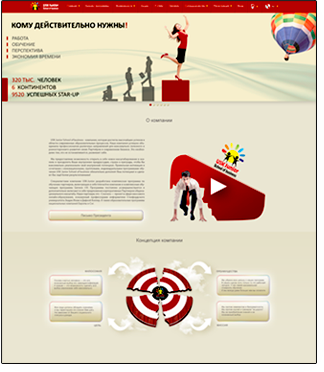
1,2,3 сообщения -
Ваша визитка доступна множеству!

SMS медиа (SMS marketing) – инструмент, позволяющий мгновенно отправлять любое
количество целевых, кратких sms событий на мобильные гаджеты абонентов сотовой
связи. Достаточно составить одно сообщение и перенести его в динамичный message.
Это сообщение отправится всем адресатам, которых вы указали. Даёт экономию времени,
высокую конверсию, что приводит к конечному лиду в автоворонке продаж.
Существует две целевые аудитории:
1) личные знакомства, партнёры, так называемые тёплые контакты;
2) и все остальные - холодные контакты.
Цель рассылки: приглашения, реклама, пиар, акции, встречии т.д. Новости для
партнёров, поздравление.
Мы предлагаем рассылку - SMS marketing вашим клиентам/партнёрам, для информирования их о каких-либо событиях (Бизнес встречи, поздравления, обновления на ресурсе).
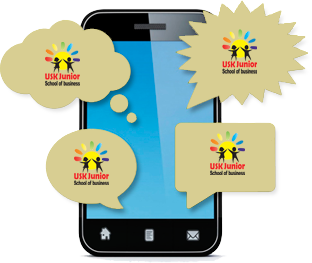
Одним нажатием миллион касаний!

E-mail рассылка (E-mail marketing) – это процедура глобального информирования о продукте через электронную почту на множество e-mail адресов. Вам не нужно создавать новое письмо каждый раз, так же как и выбирать адресата, достаточно составить одно сообщение и перенести его в динамический шаблон. Это сообщение отправится всем адресатам, которых вы указали. Даёт экономию времени, высокую конверсию, что приводит к конечному лиду в автоворонке продаж.
Мы предлагаем рассылку e-mail сообщений Вашим клиентам/партнёрам, для информирования их о каких-либо событиях (Бизнес встречи, поздравления, обновления на ресурсе).

Система контоля и взаимодействия с клиентами

(Customer Relationship Management) — программное обеспечение прикладного характера. Предназначено для организаций в автоматизации процесса взаимодействия с клиентами(заказчиками), целью которой является повышение продаж и оптимизация маркетинга. Эффективное обслуживание клиентов посредством сохранения информации о базах с клиентами, историей взаимоотношений с ними, интеграция в CRM бизнес-модулей, а так же последующего выведения статистических отчетов, аналитика результатов.
Современную настройку вашего бизнеса. Обвязка и интеграция вашего WEB - ресурса; сайта, лендинга, net - магазина... Ввод и отслеживание клиента посредством e-mail / sms маркетинга, messenger, smm. seo, ceo, ip - телефония, платежные системы, склад, логистика... - то есть всё, что необходимо для оптимизации в управлении предприятием.
CRM — модель трансакций с клиентом, основанная на постулате, что центром всей философии вашего бизнеса является клиент. Главными направлением деятельности являются меры по обеспечению и контролю эффективного маркетинга, ценообразования, продаж и обслуживания клиентов. Реализация этих бизнес-процессов включает хранение, анализ и сбор информации о потребителях, поставщиках, партнёрах, контрагентах. А так же дополнительно информацию обо всех внутренних процессах компании.

WEB ROOM (вебинарная комната) - IT-инструмент проведения мульти-видео конференций, совещаний, обучения, встреч. Транслируйте свой опыт посредством видеочата, используйте веб-комнату online как возможность передать информацию о продукте. Либо в виде ссылки на видеозапись о вас и вашем бизнесе, если используете его offline. Высокоэффективный онлайн видео модуль, который соединит ваш видеоканал и контент с партнёром, даст возможность расширить свой и бизнес партнёра, увеличит трафик на ваш ресурс, сделав его более посещаемым
Мы предоставляем возможность пройти обучение по данным программам для продвижения Вашего бизнеса. Дополнительно включаем курс анализа веб-ресурса, в результате которого он станет значительно эффективней для поисковых систем. Проводим интеграцию Вашей интернет-страницы под социальные/торговые площадки и другие модули, расширяющие Ваш бизнес.

Ваш канал на Youtube!

Видео - самый быстрый и яркий способ рассказать о своём бизнесе за пару минут! Оригинальный и броский сценарий, правильно подобранные изображения, приятный голос диктора, музыкальное сопровождение вызовет интерес к Вашей продукции и всего за 10 секунд превратит случайного зрителя в Вашего потенциального покупателя. Сегодня именно видеоконтент является самым высокоперспективным, именно он получает больше всего органического охвата, чем иные виды публикаций.
Мы предлагаем Вам создание и редакцию видеоролика под видеоконтент вашего веб-ресурса, как партнёру, так и клиенту компании.
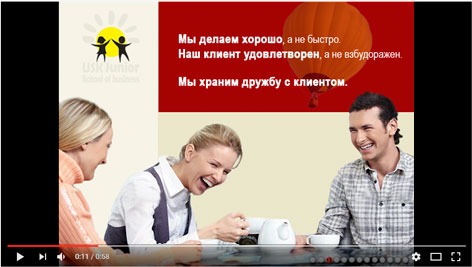
Сделай свое предложение более активным!

Тизерная реклама (англ., teaser «дразнилка, загадка») – вид передачи информации рекламного характера с особой структурой - это часть описания продукта, который рекламируется, но не до конца демонстрируется и передаётся на изображении, тексте или ином носителе информации.
Мы рекомендуем и предлагаем создание вашей тизерной сети. На ресурсах вы размещаете блок тизеров — небольших текстовых объявлений, изображений, баннеров, которые заинтересуют клиента и простимулируют его к переходу по ссылке, что приведёт к развитию и продвижению клиентских и партнёрских веб-платформ.

Начни учет и контроль!

Лидогенерация, на сегодняшний день, занимает первое место среди трендов интернет-маркетинга. Термин «лид» представляет собой одно сделанное целевое действие посетителями веб-ресурса, то есть регистрация на ресурсе и приобретение (лид), заполнение формы, осуществление заказа. Ревизия CRM-системы.
Мы предлагаем Вам осуществление лидогенерации, которая увеличит поток потенциальных Клиентов/Партнёрови и количество удачных сделок.

Напоминай о себе!

Ретаргетинг (retargeting — перенацеливание) — настройка рекламной компании, благодаря которой клиент, побывавший на вашем веб-ресурсе, возвращается на него снова и снова до тех пор, пока не совершит лид (покупку), либо оставит целевую заявку. Это многократно, не зависимо от поискового запроса, повторяющиеся показы вашей партнёрской веб-страницы уже просмотренной ранее потенциальным клиентом. Является необходимым и важным инструментом для интеграции клиентов в CRM-систему в продвижении вашего командного, либо частного бизнеса.
Мы предоставляем возможность пройти обучение по данным программам для продвижения Вашего бизнеса. Дополнительно включаем курс анализа веб-ресурса, в результате которого он станет значительно эффективней для поисковых систем. Проводим интеграцию Вашей интернет-страницы под социальные/торговые площадки и другие модули, расширяющие Ваш бизнес.

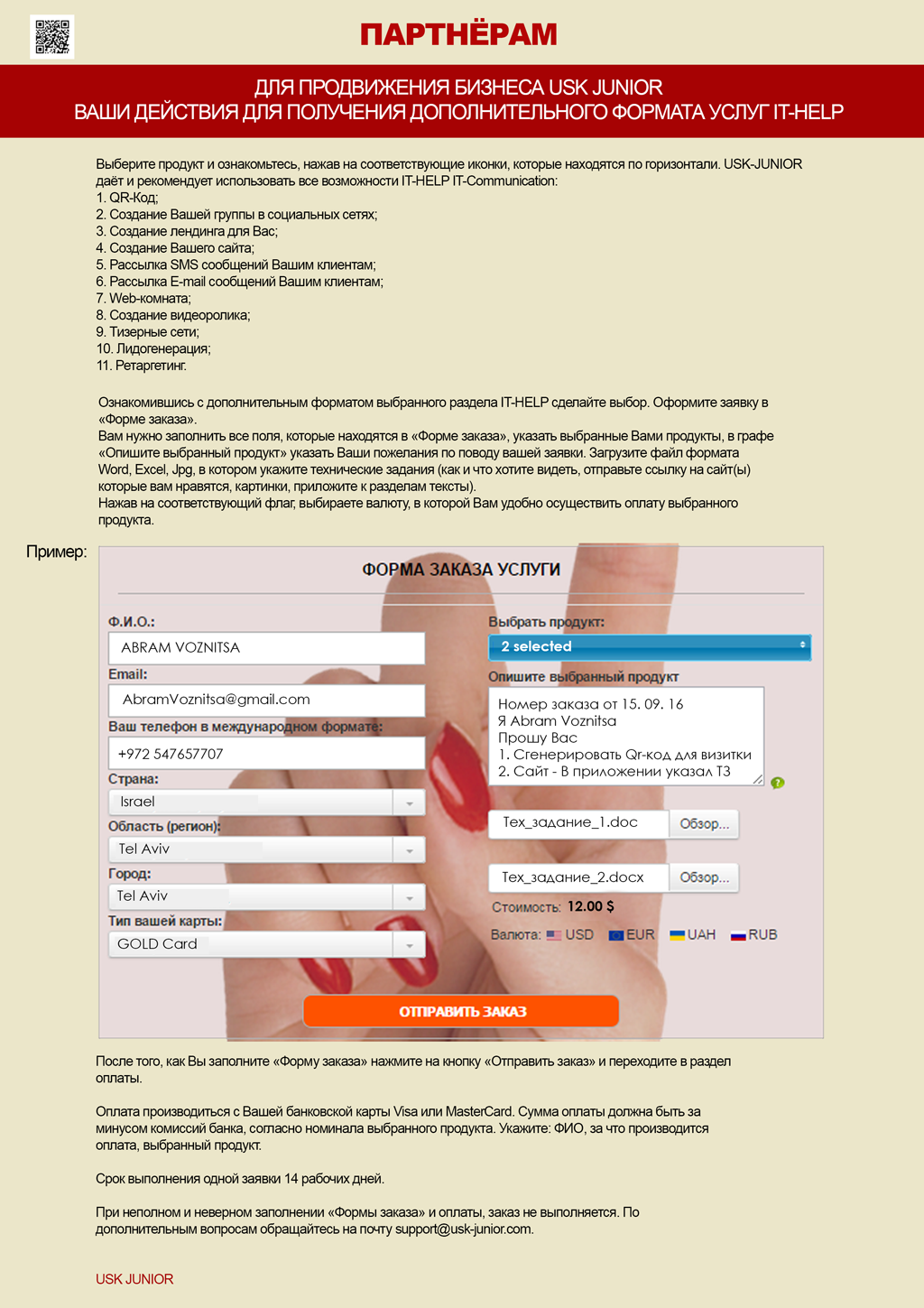
1. Любая информация, переданная Сторонами друг другу при пользовании ресурсами Сайта, является конфиденциальной информацией.
2. Пользователь дает разрешение Администрации Сайта на сбор, обработку и хранение своих личных персональных данных, а также на рассылку текстовой и графической информации рекламного характера.
3. Стороны обязуются соблюдать данное соглашение, регламентирующее правоотношения связанные с установлением, изменением и прекращением режима конфиденциальности в отношении личной информации Сторон и не разглашать конфиденциальную информацию третьим лицам.
4. Администрация Сайта собирает два вида информации о Пользователе:
— персональную информацию, которую Пользователь сознательно раскрыл Администрации Сайта в целях пользования ресурсами Сайта;
— техническую информацию, автоматически собираемую программным обеспечением Сайта во время его посещения. Во время посещения Пользователем Сайта службе поддержки автоматически становится доступной информация из стандартных журналов регистрации сервера (server logs). Сюда входит IP-адрес компьютера Пользователя (или прокси-сервера, если он используется для выхода в интернет), имя интернет-провайдера, имя домена, тип браузера и операционной системы, информация о сайте, с которого Пользователь совершил переход на Сайт, страницах Сайта, которые посещает Пользователь, дате и времени этих посещений, файлах, которые Пользователь загружает. Эта информация анализируется программно в агрегированном (обезличенном) виде для анализа посещаемости Сайта, и используется при разработке предложений по его улучшению и развитию.
Связь между IP-адресом и персональной информацией Пользователя никогда не раскрывается третьим лицам, за исключением тех случаев, когда это требуется законодательство страны, резидентом которой является Пользователь. С целью защиты информации мы используем криптографический SSL протокол, который подразумевает более безопасную связь. Он использует асимметричную криптографию для аутентификации ключей обмена, симметричное шифрование для сохранения конфиденциальности, коды аутентификации сообщений для целостности сообщений.
5. Администрация Сайта очень серьезно относится к защите персональных данных Пользователя и никогда не предоставляет персональную информацию Пользователя кому бы то ни было, кроме случаев, когда этого прямо требует уполномоченный государственный орган (например, по письменному запросу суда). Вся персональная информация Пользователя используются для связи с ним, для исполнения сделки, заключенной между Пользователями Сайта с помощью ресурсов Сайта, для анализа посещаемости Сайта, для разработки предложений по его улучшению и развитию и может быть раскрыта иным третьим лицам только с его разрешения.
6. Администрация Сайта осуществляет защиту персональной информации Пользователя, применяя общепринятые методы безопасности для обеспечения защиты информации от потери, искажения и несанкционированного распространения. Безопасность реализуется программными средствами сетевой защиты, процедурами проверки доступа, применением криптографических средств защиты информации, соблюдением политики конфиденциальности.
7. На Сайте реализована технология идентификации пользователей, основанная на использовании файлов cookies. Cookies — это небольшие по размеру файлы, сохраняемые на компьютере Пользователя посредством веб-браузера. На компьютере, используемом Пользователем для доступа на Сайт, могут быть записаны файлы cookies, которые в дальнейшем будут использованы для автоматической авторизации, а также для сбора статистических данных, в частности о посещаемости Сайта. Администрация Сайта не сохраняет персональные данные или пароли в файлах cookies. Пользователь вправе запретить сохранение файлов cookies на компьютере, используемом для доступа к Сайту, соответствующим образом настроив свой браузер. При этом следует иметь в виду, что все сервисы, использующие данную технологию, могут оказаться недоступными.
Настоящее Соглашение является официальным предложением (публичной офертой), USK GROUP Ltd и USK JUNIOR. (далее «Компания») в адрес любого физического лица, обладающего дееспособностью и необходимыми полномочиями заключить договор с Компанией на условиях и в порядке, установленными данным Соглашением, действующим законодательством и содержит все существенные условия договора. Настоящее Соглашение устанавливается Компанией самостоятельно, и может быть принято не иначе, как путем присоединения к нему в целом, без каких- либо исключений и оговорок.
В данном Соглашении термины имеют следующее значение:
Пользователь/клиент - физическое лицо, надлежащим образом присоединившееся к настоящему
Пользовательскому Соглашению, прошедшее регистрацию на сайте и являющееся владельцем клиентской электронной карты.
Независимый партнер — физическое лицо, надлежащим образом присоединившееся к настоящему Пользовательскому Соглашению, прошедшее регистрацию на сайте и являющееся владельцем клиентской электронной карты, которое занимается распространением продукции путем поиска конечных потребителей, и получающее за свою деятельность денежное вознаграждение от Компании согласно Маркетинг-плана.
Маркетинг-план – установленный компанией алгоритм начисления вознаграждений за рекомендацию услуг Компании другим физическим лицам.
Бонусный балл (bonus point «BP») — это корпоративная валюта, которая исчисляется в электронном эквиваленте, и используется для расчета и выплат вознаграждений Партнерам. Вознаграждение начисляется на основании баллов.
Персональная (личная) страница – определенная площадь веб-ресурса, отображающая данные Партнёра, включая личный кабинет.
Личный кабинет– Определенная закрытая область веб-ресурса отображающая данные бонусных баллов, личного счета, команды, и иной информации в рамках Маркетинг-плана.
Клиентская карта(карта) — персональный идентификационный материальный носитель, являющийся оборотоспособным объектом гражданских прав, который обеспечивает доступ её владельцу к использованию возможностей обучающей программы «USK JUNIOR» в соответствии с настоящим Соглашением.
Стороны– Независимый партнёр и Компания (он же Спонсор, он же Партнер, он же независимый Партнер, он же независимый Консультант и иные синонимы).
Активация карты – это совокупность действий владельца карты, заключающиеся в полной инициализации Партнёра в системе ведения реестра и в клиентской базе Компании, целью которых является фиксация идентификационных данных, необходимых для фактического подключения Партнёра к Услуге.
Интерактив генезис 1-4 – курсы обучающих программ:
Отзывы о программах USK JUNIOR